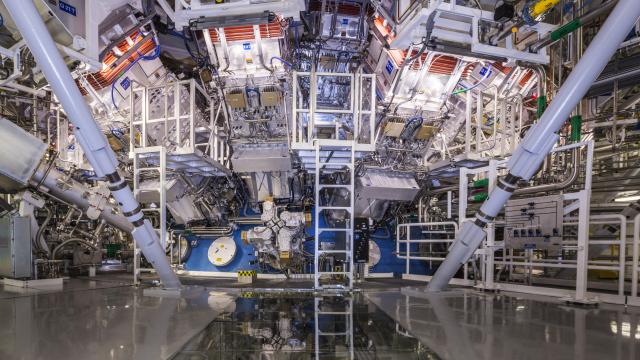In December 2022, researchers at the US National Ignition Facility achieved a significant breakthrough in fusion energy research: they successfully achieved ‘ignition’, wherein their laser-powered fusion reaction produced more energy than it consumed.
However, such monumental achievements require thorough verification, which can be a time-consuming process.
A crucial step in the validation process is the peer review of a series of papers detailing the experimental methodology, technological advancements, and the outcomes of the initial breakthrough. This ensures that independent experts scrutinize the methods and findings to verify their accuracy.
Devastating Loss: Decades of Leukemia Research Destroyed in Freezer Malfunction
“This accomplishment represents the culmination of over five decades of research and provides evidence that laboratory-based fusion, grounded in fundamental physics principles, is indeed feasible,” remarked the members of the Indirect Drive ICF (Inertial Confinement Fusion) Collaboration in the first of five papers.
Nuclear fusion, the process of merging two or more atoms to form a larger atom, holds the promise of offering a virtually limitless source of clean energy without the greenhouse gas emissions associated with fossil fuels or the radioactive waste generated by nuclear fission.
However, these laboratory-scale fusion reactions, although groundbreaking, are still far from being implemented on a commercial scale. They replicate the fusion processes that power celestial bodies like the Sun but on a minuscule scale. Unlike the Sun, which relies on gravitational forces, terrestrial fusion methods primarily rely on intense heat.
In the case of this particular fusion technology, the required heat is generated by a burst of high-powered light. The experimental setup involves bombarding a capsule containing a small amount of deuterium and tritium fuel with 192 powerful lasers. This process raises the pressure to 600 billion atmospheres and the temperature to 151 million °C (272 million °F).
Brain of pig whose head was severed from its body kept alive for another 5 hours
Under these extreme conditions, the fuel implodes, causing the deuterium and tritium atoms to fuse, resulting in the release of energy.
In the groundbreaking experiment of December 2022, lasers delivered 2.05 megajoules (MJ) of energy into the fuel, resulting in the release of 3.15 MJ – indicating that the reaction produced roughly 1.5 times more energy than was initially supplied.
The newly published papers elucidate the progress that led to achieving energy ‘break-even’, including adjustments to the fuel mix, rectification of defects in the capsule walls, augmentation of the capsule’s mass, enhancement of laser energies, and augmentation of the volume of fuel utilized.
The attainment of this ignition threshold marks the dawn of a new era in fusion research, characterized by ongoing advancements. Subsequent experiments in the past year have seen researchers firing more energetic lasers and achieving even higher energy yields.
One such experiment, conducted in mid-2023, yielded 3.88 MJ of energy from the same 2.05 MJ energy input – representing the highest yield achieved to date.
However, it’s crucial to acknowledge that these experiments necessitate colossal amounts of energy to power the lasers – approximately 500 trillion watts, which is a thousand times more than the instantaneous power output of the entire US national energy grid. Therefore, there is still a substantial gap to bridge before fusion reactions can become net energy producers.
Martin Freer, a nuclear physicist at the University of Birmingham, expressed cautious optimism about the prospect of achieving practical fusion energy, emphasizing the significant scientific challenges that lie ahead.
Despite its potential as a clean energy source, scientists caution that nuclear fusion is not an immediate solution to the climate crisis. Aneeqa Khan, a nuclear fusion researcher at the University of Manchester, underscores that commercial fusion facilities are still decades away, whereas urgent action is needed to mitigate climate change by significantly reducing global carbon emissions by 2030.
Luckily, we already have the renewable energy technologies to do that.
The five papers have been published in Physical Review Letters, which you can read here, here, here, here, and here.



